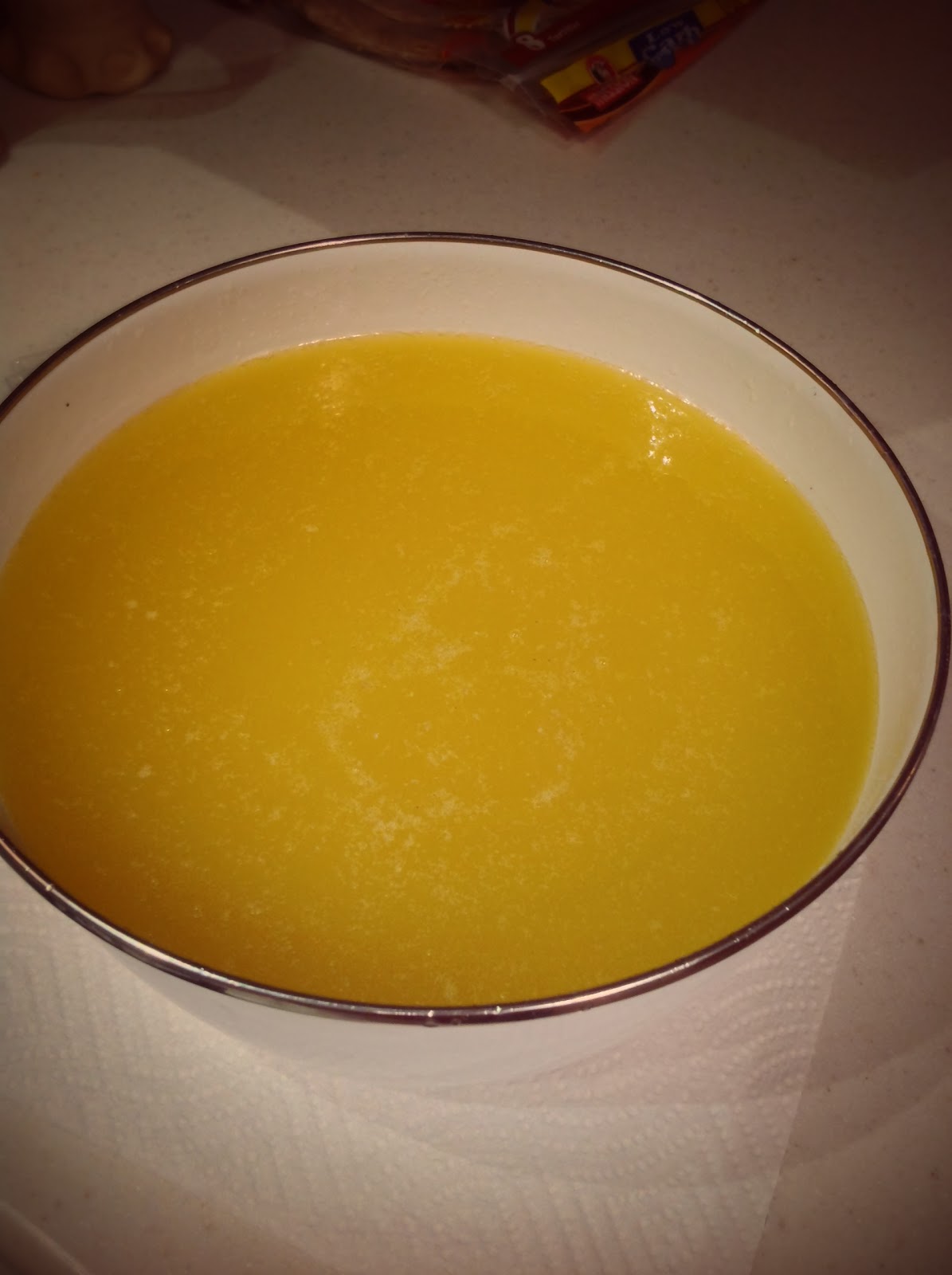 |
| Purchased beef suet. |
Suet is raw beef fat [1] and is generally considered a waste product of the commercial meat industry. In hindsight I would have preferred to use pasture-fed, organic suet so that I can use it for creams and soaps, however since the original plan was to just use it for candles I'm starting with two packages of beef suet purchased from the local supermarket - 2.90lb for $1.69/lb. Next time I will be a more discerning shopper.
First, chop the suet into small chunks, the smaller the chunks the easier it will process (if you have a meat grinder available then use it). Raw suet feels greasy to the touch just like you imagine fat to feel. Discard anything that looks like muscle, tendon, bone etc.
 |
| Almost 3lbs of chopped beef suet. |
 |
| Simmering on the stove. |
 |
| Liquid after filtering. |
As soon as it starts to boil turn the heat down to a low simmer. I left mine like this for about three hours mashing the solids every so often to release the fat [3].
When you decide that it's finished cooking, carefully pour the fatty water through a sieve into a clean bowl and squish the juices out of the fat solids (in the sieve) as best you can. You'll be amazed at how much liquid these retain. Let the bowl of "juice" cool until the top is a solid, creamy-white mass. I put mine in the fridge overnight.
 |
| Tallow after being chopped for final cooking. |
Strain it through a fine sieve to remove any remaining scummies. I used a piece of natural linen in my metal sieve. At this point you can strain it straight into your final storage container, it will harden to a creamy-white mass. Mine has the slightest hint of a beef smell when you stick your nose right up to it.
 |
| Finished tallow that will be used to make candles for the production of lamp-black pigment. |
[1] Mirriam-Webster Online defines suet as "the hard fat about the kidneys and loins in beef and mutton that yields tallow".
[2] My "Shop Gnome" and I were having a discussion when he convinced me (stupidly) to continue it in the garage since the pot was nowhere near boiling. Not three minutes later I hear the sizzle of the fatty water hitting the stove-top and open the door to discover smoke billowing from the kitchen just as the fire alarm started to warn us of the danger. It was a HUGE disgusting mess of fat covering everything and took a decent amount of time to clean up before I could put the pot back on the stove.
[3] I've since read accounts of others leaving it to simmer for up to eight hours. Some using the stove, others using the low-setting on the crockpot.
Sources:
http://thehoodedhare.com/lighting-in-the-middle-ages.pdf
http://www.candles.org/about_history.html
http://en.wikipedia.org/wiki/History_of_candle_making
http://lostartskitchen.wordpress.com/2011/03/12/rendering-fats-at-home-primer-lesson-one/
http://preparednessadvice.com/food_storage/suet-and-tallow/#.Uqz1HSG9KK0
[2] My "Shop Gnome" and I were having a discussion when he convinced me (stupidly) to continue it in the garage since the pot was nowhere near boiling. Not three minutes later I hear the sizzle of the fatty water hitting the stove-top and open the door to discover smoke billowing from the kitchen just as the fire alarm started to warn us of the danger. It was a HUGE disgusting mess of fat covering everything and took a decent amount of time to clean up before I could put the pot back on the stove.
[3] I've since read accounts of others leaving it to simmer for up to eight hours. Some using the stove, others using the low-setting on the crockpot.
Sources:
http://thehoodedhare.com/lighting-in-the-middle-ages.pdf
http://www.candles.org/about_history.html
http://en.wikipedia.org/wiki/History_of_candle_making
http://lostartskitchen.wordpress.com/2011/03/12/rendering-fats-at-home-primer-lesson-one/
http://preparednessadvice.com/food_storage/suet-and-tallow/#.Uqz1HSG9KK0
No comments:
Post a Comment
Note: Only a member of this blog may post a comment.